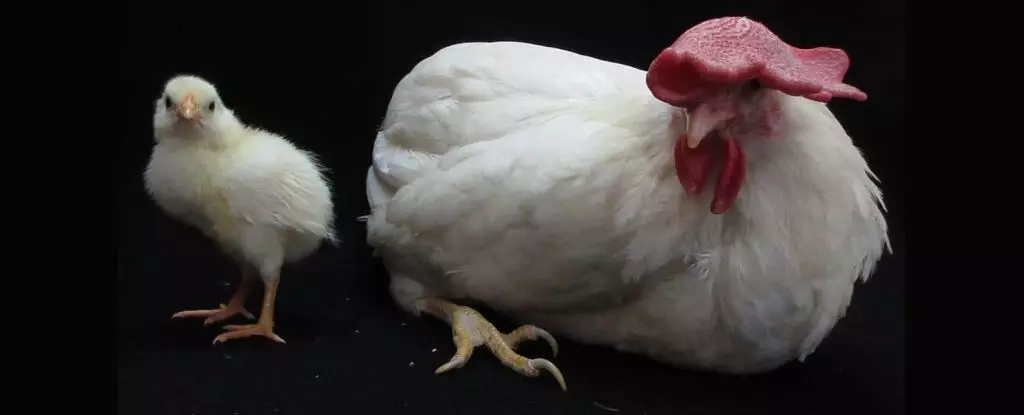The phenomenon of avian life is breathtaking, showcasing the incredible diversity of bird species that adapt and thrive in every part of our planet. These creatures, being the closest living descendants of dinosaurs, lead us into a mesmerizing journey as they exhibit variations in behavior, anatomy, and reproductive strategies. Specifically, the mystery of their embryonic development hidden away in opaque eggs has fascinated scientists for generations. Recently, a groundbreaking advancement in avian developmental biology has emerged: a novel shell-less culture system (SLCS) that allows unprecedented observation of embryonic development in chickens. This article explores the implications of this innovative research and the exciting possibilities that lie ahead.
Recent investigations led by a team of scientists, primarily including veterinary scientist Katsuya Obara, have pushed the boundaries of traditional embryology. The SLCS they developed allows scientists to observe chick embryos throughout their entire development cycle without the interference of an eggshell. With the ability to monitor the avian development process from zygote to hatchling, the implications of this system are expansive, not only for poultry science but also for understanding fundamental biological processes in birds.
Historically, the focus on egg and embryonic development faced significant obstacles. In a previous study from 2014, scientists attempted to culture embryos outside their eggs, yielding some promising results but ultimately falling short of achieving sustainable developmental norms. Edging closer to their goals, the 2023 findings represent a significant leap forward, demonstrating that it is indeed feasible to nourish and grow avian embryos in controlled environments.
One of the pivotal challenges in embryonic avian development in a culture vessel is keeping the yolk vitelline membrane from drying out. The membrane is crucial as it protects the embryo and supports its development. By strategically adjusting their culture methods, Obara and his team employed a rotary shaker to create a continuous flow of albumen, a method that enabled the team to maintain appropriate moisture levels around the developing embryos.
Through experimentation, they tested various rotation speeds to balance the embryo’s survival and development potential. Observations at different speeds revealed valuable insights: while a gentle 6 rotations per minute yielded the highest survival rates, it also resulted in noticeable developmental delays. The ideal balance, as determined, was 10 rotations per minute, which maintained healthy embryo growth without excessive stress due to rapid movement.
Within their experimental setup, the addition of oxygen significantly affected embryo survival and development rates. After determining that oxygen needs arose at specific periods during embryonic growth, the research team fine-tuned their timing to enhance outcomes. However, they discovered that the precise moment of introduction did not substantially alter overall development potential; it merely established an environment that supported embryo viability.
An ingenious move included adding calcium carbonate powder, the primary material constituting eggshells, to their culture medium. This gesture mirrored the natural environment in which embryos typically thrive, further enabling successful development. The dual strategy of incorporating supplemental oxygen alongside calcium carbonate proved to be crucial in refining the culture conditions necessary for success.
The successful implementation of this shell-less culture system not only marks a milestone in avian developmental biology but also sets the stage for transformative research opportunities. With normal hatch rates reaching 10.5 percent through this innovative method, the potential applications extend beyond mere curiosity; they open the door to exploring genetic modifications, investigating developmental diseases, and informing conservation efforts for various bird species.
Moreover, this research facilitates real-time monitoring of embryos through a transparent interface, allowing researchers to assess phenotypic outcomes directly. This capacity for visual observation is unprecedented and could dramatically impact how scientists approach avian biology and embryology.
As research continues to evolve, the implications of the SLCS approach could birth new avenues for avian biology, genetic research, and veterinary medicine. The opportunity to observe and manipulate developmental processes in a controlled setting could revolutionize how science approaches avian conservation and ethical breeding practices.
The recent advances in shell-less culture systems represent not just a triumph in observational biology but also a bold step towards deeper understanding and innovation in avian science. The ongoing exploration of these methods promises profound transformations in how we cultivate our knowledge of life and its many forms, ensuring that the fascinating world of birds continues to enthrall and educate us for generations to come.


Leave a Reply